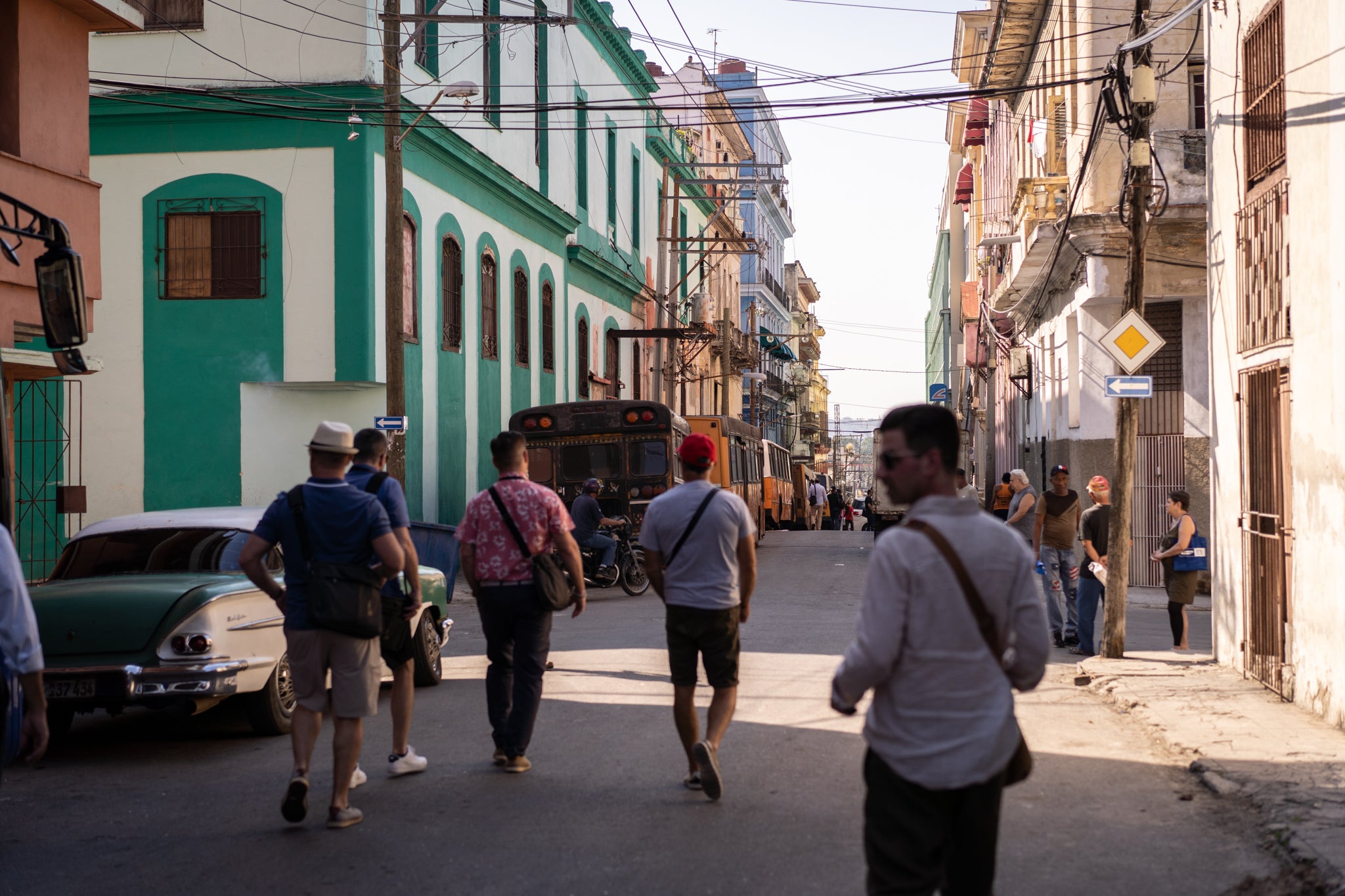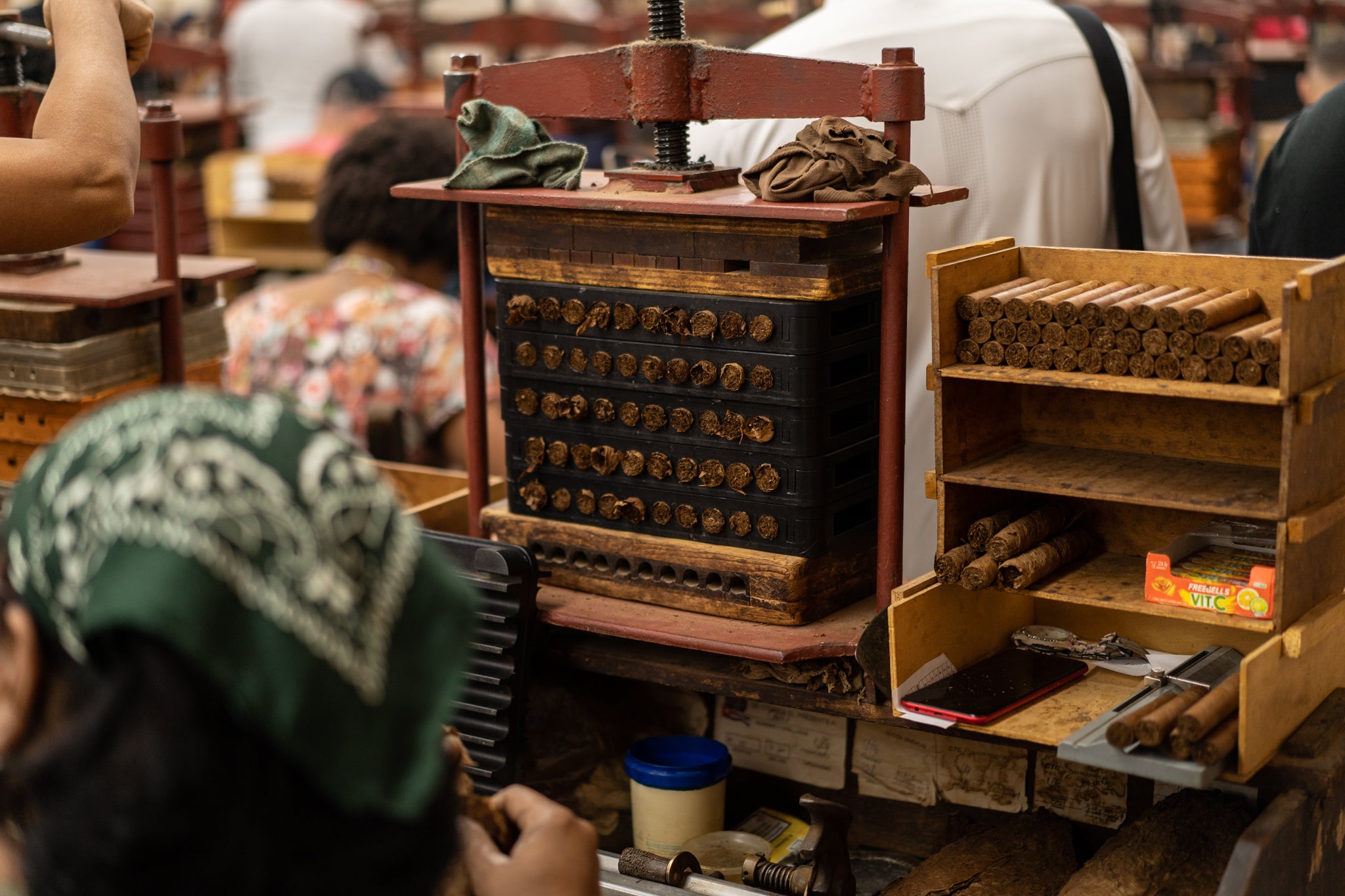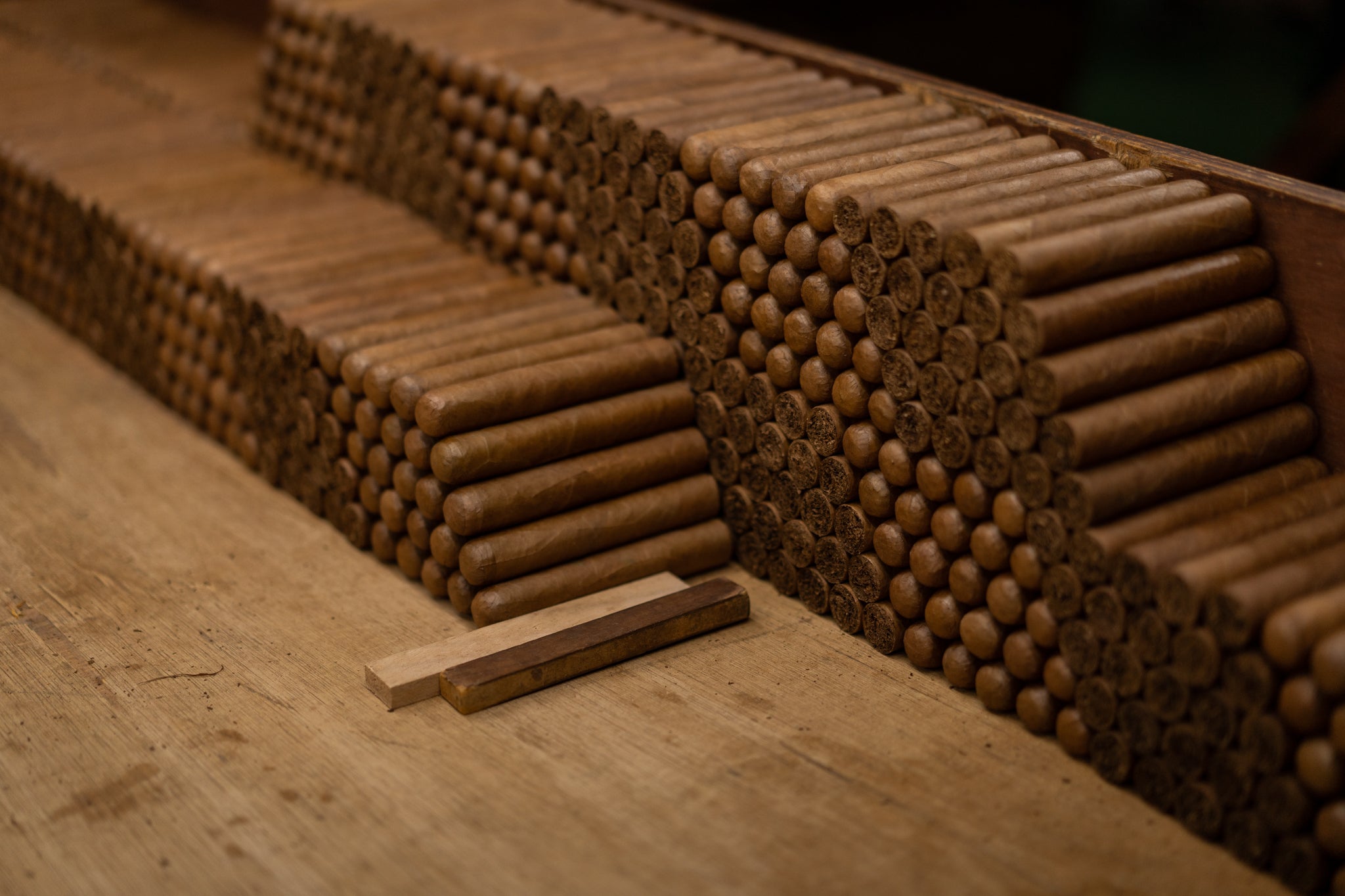Fresh off the back of the incredible visit to Pinar del Río, it was time to explore some local heritage courtesy of the 23rd iteration of the Habanos Festival. A slightly relaxed start time in comparison, we gathered outside the Hotel Nacional on a beautiful morning, waiting to be picked up by our guide. Aboard we climbed and off we went. The drive, unlike the straight shot for a couple hours to Vuelta Abajo, was more of a workout for the driver this time out. Having to navigate the narrow and pothole-laden roads of Havana proper, it was by the finest of margins that we managed to get to the first factory, Partagás, completely unscathed.



Arriving at the Partagás factory in Havana.
We stepped off the coach, and right in front of us was a beautiful facade, enveloped by prominent pillars, with engraved insignia which read ‘1902 POLLACK 1925’. The building used to be a warehouse for tobacco, and owned by Pollack y Compania prior to the Revolution. It’s understandable to think that this factory would exclusive facilitate the making of Partagás cigars, but the tour guide quickly informed us that in addition to the brand, this factory also creates cigars for the likes of Romeo y Julieta, Cohiba, Hoyo de Monterrey, Montecristo, Quai d’Orsay and more.
Having seen how the tobacco leaves were grown and cultivated in Pinar del Río, this trip took us on a journey of how the cigars are made. We were ushered through various rooms to see the step-by-step process of cigar making: from de-stemming to rolling and wrapping, colour grading and sorting, to banding and packaging. To witness the skill and dexterity of the torcedores, the playful manner and energy in which they work, the incredible attention to detail when it comes to sorting and banding, and the finished product boxed? Wow.

The de-stemming process (despalillo).



Cigar rolling and pressing in action.

Testing the draw of the cigars.


Colour sorting and grading.



Bands being added to the Ramon Allones Noellas cigars; Bolivar Libertador LCDH cigars being boxed; and the Quai d'Orsay No. 50 ready to go at the Partagás factory.
We headed back out having lost half of our group, and ended up standing outside the factory in 30 degree heat for around twenty minutes, before realising that a small contingent had stayed back in order to ask more questions and enquire about purchasing cigars. Alas, we were finally moving again before our guide received a call. It turned out, we had still managed to leave a solo traveller behind (who also lingered at the factory), so the journey took an unexpected detour, reverting to Partagás. Again, considering how narrow the streets were, and how long the coach was, the flawless navigation continued to impress us all.
There was a sense of heightened excitement as we pulled up to La Corona, and for good reason. The largest factory in Havana, and with over 700 people employed, it truly is a remarkable place—particularly the central cigar rolling room. Whilst the processes and stages we saw were very similar, as was the energy, it was no less a brilliant trip and certainly a must-visit. The factory also produces cigars for the aforementioned brands, as well as Cuaba, San Cristobal and one of my personal favourites, Por Larrañaga. It's quite surreal standing in the room with the rollers, watching history being created in front of our very eyes.



La Corona cigar factory, Havana, Cuba.

Historical images of the factory are well-preserved at La Corona.

The main rolling room in La Corona.


Wrapping the final cigars before they get ready to be packaged.

Por Larrañaga cigars at La Corona.

Friend of EGM and Hombre Habano in Communication 2023 award winner, Jasim Ahmed, at La Corona.

